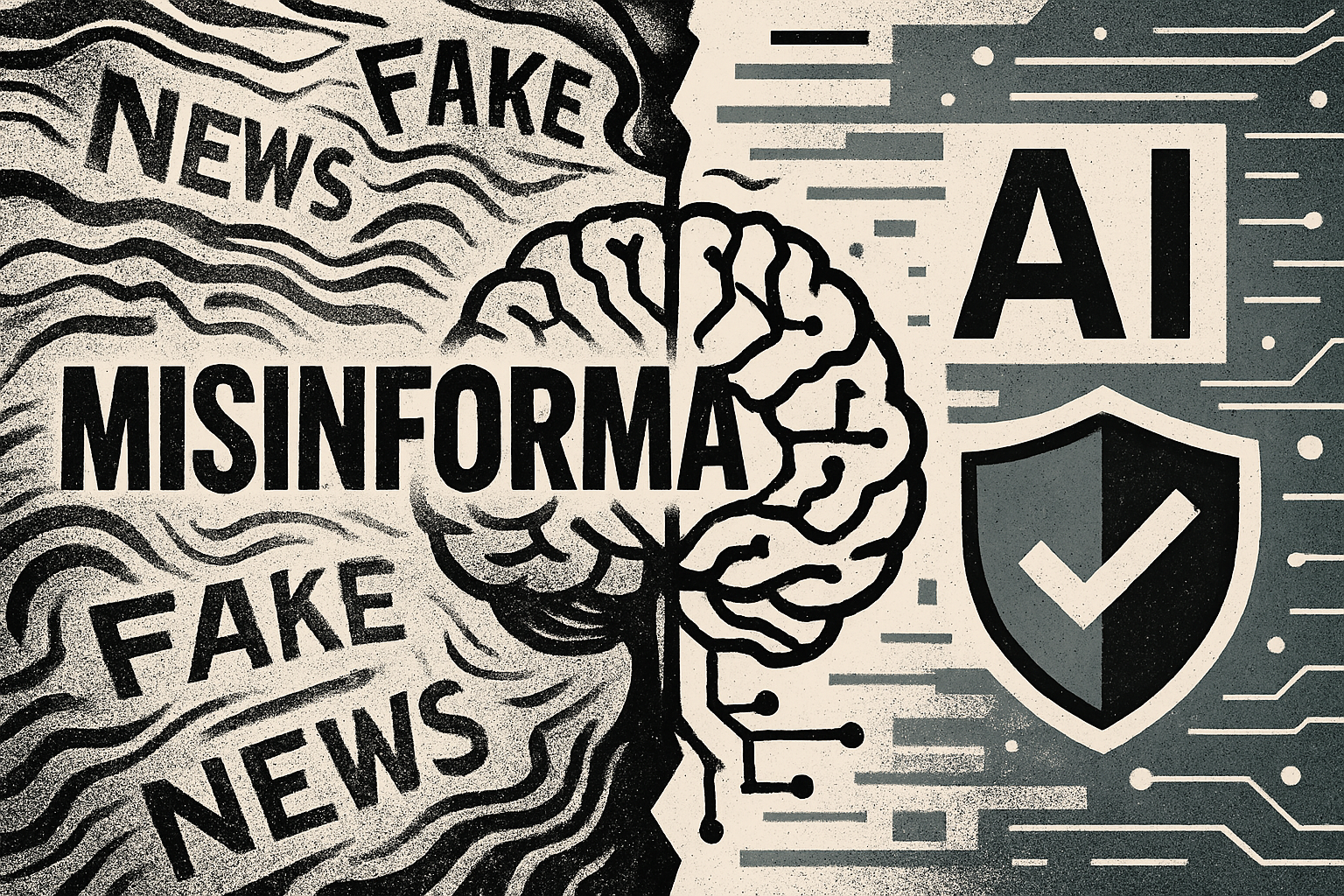
AI in Combating Misinformation and Fake News: Challenges and Solutions
Introduction: The Double-Edged Sword of AI
Artificial Intelligence (AI) presents a profound paradox in the modern information ecosystem: it serves as a powerful engine for both the creation and dissemination of misinformation and, simultaneously, offers some of the most promising tools to combat this digital scourge. As AI technologies become more sophisticated and accessible, their capacity to generate convincing fake news, deepfakes, and automated propaganda campaigns poses a significant threat to public discourse, trust in institutions, and democratic processes. However, the same underlying capabilities—pattern recognition, natural language processing, and large-scale data analysis—are being harnessed to detect, flag, and neutralize these malicious uses. This article delves into the complex role of AI in the battle against misinformation, exploring how it’s used by malicious actors, the innovative AI-driven solutions being developed to counter these threats, the inherent challenges, and the critical importance of a multi-faceted approach that includes technological vigilance, media literacy, and ethical considerations. We will also touch upon potential affiliate opportunities for tools and services in this domain.
How AI is Used to Create and Spread Misinformation: The Dark Side of Innovation
The malicious application of AI in generating and propagating falsehoods is a growing concern:
- Deepfakes: AI algorithms, particularly Generative Adversarial Networks (GANs), can create highly realistic but entirely fabricated videos or audio recordings of individuals saying or doing things they never did. These can be used for character assassination, political manipulation, or fraud.
- AI-Generated Text: Advanced language models (like GPT-3 and its successors) can produce human-quality text, making it easier to create vast quantities of fake news articles, social media posts, and comments that appear authentic, overwhelming genuine information channels.
- Automated Bot Networks: AI-powered bots can automate the creation and mass distribution of misinformation across social media platforms, amplifying false narratives and creating artificial trends or an illusion of widespread support for a particular viewpoint.
- Microtargeting and Personalized Disinformation: AI can be used to analyze individuals’ online behavior and psychological profiles to deliver tailored misinformation designed to be maximally persuasive or divisive.
AI Tools for Detecting Fake News and Deepfakes: The Technological Counter-Offensive
Researchers and companies are actively developing AI-driven tools to identify and flag misinformation:
- Content Pattern Analysis: AI models can be trained to identify linguistic patterns, stylistic inconsistencies, or factual inaccuracies that are characteristic of fake news or manipulated content.
- Source Credibility Assessment: AI can analyze the reputation and historical accuracy of news sources, social media accounts, or websites to assign a credibility score, helping users and platforms identify unreliable information.
- Image and Video Manipulation Detection: Specialized AI algorithms are being developed to detect the subtle artifacts and inconsistencies present in deepfakes or digitally altered images that may be invisible to the human eye.
- Affiliate Opportunity: Software or services offering deepfake detection, content verification tools for journalists or businesses, and perhaps advanced media monitoring services that flag potential misinformation campaigns.
The Role of Natural Language Processing (NLP) in Identifying Biased or Manipulative Language
Natural Language Processing (NLP), a subfield of AI, plays a crucial role in understanding and analyzing text-based misinformation:
- Sentiment Analysis: NLP can determine the emotional tone of a piece of content, which can sometimes indicate manipulative intent (e.g., excessive use of emotionally charged language).
- Bias Detection: AI models are being trained to identify subtle biases in language that might indicate a partisan or propagandistic agenda.
- Identifying Propaganda Techniques: NLP can be used to recognize specific rhetorical strategies commonly employed in propaganda, such as ad hominem attacks, fear-mongering, or whataboutism.
Challenges in AI-Driven Fact-Checking: A Complex and Evolving Battlefield
Despite the advancements, AI-driven fact-checking faces significant hurdles:
- Speed and Scale of Dissemination: Misinformation often spreads far more rapidly than fact-checking efforts can keep up with, even with AI assistance.
- Evolving Tactics of Malicious Actors: Those creating misinformation constantly adapt their techniques to evade detection by current AI models, leading to an ongoing technological arms race.
- Risk of False Positives/Negatives: AI detection systems are not infallible and can incorrectly flag legitimate content as false (false positive) or fail to detect actual misinformation (false negative), both of which have negative consequences.
- Context and Nuance: AI struggles with understanding complex context, satire, or irony, which can lead to misinterpretations.
- Data Availability and Bias in Training Data: Effective AI models require large, diverse datasets for training. A lack of representative data or biases within the training data can lead to skewed or ineffective detection capabilities.
The Arms Race: AI vs. AI in the Information Landscape
The fight against misinformation is increasingly characterized by an

Leave a Reply